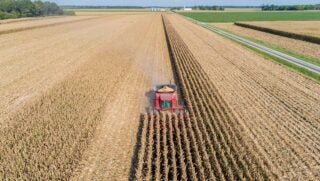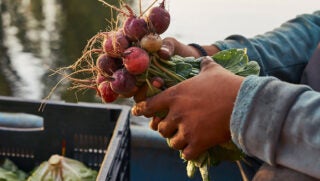The nation’s farm bill, which officially expired in 2023 and has been floundering in Congress for months, is finally seeing some tangible momentum — at least from the outside looking in. House Committee on Agriculture Chairman Glenn “GT” Thompson of Pennsylvania has released a title-by-title overview of the bipartisan policies and priorities he hopes are included in the 2024 farm bill.
“This bill is a product of an extensive and transparent process, which included soliciting feedback from members of both political parties, stakeholder input from across the nation, and some tough conversations,” he said in a statement. “Each title of this farm bill reflects a commitment to the American farmer and viable pathways to funding those commitments, and is equally responsive to the politics of the 118th Congress. The Committee on Agriculture will mark up this bill on May 23, and I hope for unanimous support in this endeavor to bring stability to producers, protect our nation’s food security, and revitalize rural America.”
This coincides with Senate Agriculture Committee Chairwoman Debbie Stabenow (D-MI) also releasing framework documents.
The five-page document from Thompson that was sent to members of the ag media spans 12 Titles, from topics that impact production growers through regulatory overhauls, trade, and crop insurance to those that don’t directly connect with food production itself, like conservation, forestry, and SNAP. At the high level, they are:
- Title I: Commodities. Aids farmers in managing risk and provides assistance following precipitous declines in commodity prices. Through the reauthorization and enhancement of commodity, marketing loan, sugar, dairy, and disaster programs, producers are provided some certainty in times of unpredictability.
- Title II: Conservation. Provides farmers, ranchers, and growers with financial and technical assistance to address a variety of natural resource concerns such as soil health and erosion, water quality and quantity, and wildlife habitat. The 2024 farm bill continues to support our proven system of voluntary, incentive-based, and locally led conservation through various improvements.
- Title III: Trade. Agriculture is the backbone to most of the world’s economies, and robust promotion programs not only create market access, but protect our agricultural interests and act as a catalyst for innovation and economic growth. By expanding the reach and impact of the Market Access Program (MAP) and Foreign Market Development (FMD) program, the 2024 farm bill will mitigate global food insecurity while providing U.S. producers new markets, improving local economies, and lessening the damage of this Administration’s ineffective trade agenda.
- Title IV: Nutrition. Supports access to families formerly disallowed to receive benefits, refocuses work programs to support upward mobility, invests in and modernizes food distribution programs to create parity with urban programming, promotes program integrity and State accountability, and advances policies related to healthy eating, healthy behaviors, and healthy outcomes.
- Title V: Credit. Our nation’s producers borrow more capital in a single harvest season than most Americans do in their entire lives. Interest rates have exploded under the Biden Administration, resulting in skyrocketing borrowing costs which fall especially hard on our nation’s younger, less established producers. Programs within the credit title are instrumental in helping producers both start and maintain their operations.

- Title VI: Rural Development. Programs offered by the USDA’s Rural Development play a vital role in enhancing rural life and fostering economic growth. The 2024 farm bill continues the long history of bipartisan support for rural development initiatives and implements important improvements to ensure a robust rural economy.
- Title VII: Research, Extension, and Related Matters. Keeps American agriculture at the forefront of innovation and productivity through cutting-edge research and supports the nation’s land-grant and non-land-grant colleges of agriculture.
- Title VIII: Forestry. Promotes active forest management through incentivizing public-private partnerships creating new market opportunities and revitalizing rural communities while reducing wildfire risk and improving forest health to ensure healthy and productive Federal, State, Tribal and private forests.
- Title IX: Energy. Increases access to energy system and efficiency updates for farmers, ranchers, and rural small businesses while encouraging growth and innovation for biofuels, bioproducts, and related feedstocks.
- Title X: Horticulture, Marketing, and Regulatory Reform. Critical investments to enhance the competitiveness of specialty crops and protect plant health. Delivers commonsense regulatory reforms necessary to relieve American farmers and ranchers from overregulation by the Biden Administration.
- Title XI: Crop Insurance. Agricultural producers are greatly affected by numerous factors outside of their control, ranging from extreme weather to geopolitical instability. Crop insurance — a vital risk management tool — is available to help producers manage the unique risks of farming and is delivered through an effective public-private partnership in which the Federal government shares in the cost of the premiums, which would otherwise be unaffordable for most farmers.
- Title XII: Miscellaneous. Brings together provisions related to livestock health and management, foreign animal disease preparedness, young and beginning farmers, and other key areas. Directs additional resources towards the three-legged stool to protect the entire livestock and poultry industry in the U.S. from foreign animal diseases.
Congress narrowly passed a stopgap bill that has extended funding for the 2018 farm bill programs for one year. But we are already on the fifth month of 2024, and committees need to start considering new agriculture and nutrition legislation.
“Dairy farmers are heartened that today, both House Agriculture Committee Chairman Glenn ‘GT’ Thompson, R-PA, and Senate Agriculture Committee Chairwoman Debbie Stabenow, D-MI, each released documents providing an overview of their farm bill priorities and plans,” said National Milk Producers Federation President and CEO Gregg Doud. “Dairy farmers and the cooperatives they own are better-served by the certainty provided under a five-year farm bill, and as both chairs point the way toward important dairy priorities across multiple farm bill titles, all of dairy is eager to see this process get moving.”







